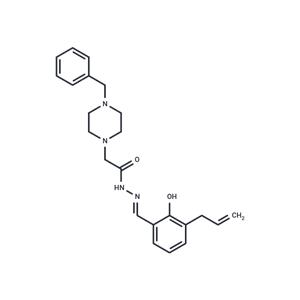
PAC-1 NEW
| Price | $43 | $75 | $125 |
| Package | 10mg | 25mg | 50mg |
| Min. Order: | |
| Supply Ability: | 10g |
| Update Time: | 2024-11-19 |
Product Details
| Product Name: PAC-1 | CAS No.: 315183-21-2 |
| Purity: 99.77% | Supply Ability: 10g |
| Release date: 2024/11/19 |
Product Introduction
Bioactivity
| Name | PAC-1 |
| Description | PAC-1 (Procaspase activating compound 1) has been used in trials studying the treatment of Lymphoma, Melanoma, Solid Tumors, Breast Cancer, and Thoracic Cancers, among others. |
| Cell Research | Cells are exposed to various concentrations of PAC-1 for 72 hours. Cell death is quantified by the addition of MTS/PMS CellTiter 96 Cell Proliferation Assay reagent. The plates are incubated at 37 °C for approximately 1 hour (until the colored product formed), and the absorbance is measured at 490 n(Only for Reference) |
| Kinase Assay | In vitro procaspase-3 activation: Procaspase-3 is expressed and purified in Escherichia coli. Various concentrations of PAC-1 are added to 90 μL of a 50 ng/mL of procaspase-3 in caspase assay buffer in a 96-well plate, The plate is incubated for 12 hours at 37 °C. A 10 μL volume of a 2 mM solution of caspase-3 peptidic substrate acetyl Asp-Glu-Val-Asp-p-nitroanilide (Ac-DEVD-pNa) in caspase assay buffer is then added to each well. The plate is read every 2 minutes at 405 nm for 2 hours in a Spectra Max Plus 384 well plate reader. The slope of the linear portion for each well is determined, and the relative increase in activation from untreated control wells is calculated. |
| In vitro | PAC-1 was able to induce cell death in a delayed manner in Bax/Bak double knockout cells and Bcl-2 and Bcl-xL overexpressing cells with the same efficacy as its wild-type counterpart.PAC-1 induced the release of cytochrome c in a caspase-3 nondependent manner, which subsequently triggered the downstream activation of caspase-3 and cell death.PAC-1 did not induce cell death in Apaf-1 knockout cells. Apaf-1 knockout cells induced cell death and cystatinase-3 activation, suggesting that apoptosome formation is required for cystatinase-3 activation via PAC-1-mediated cell death.PAC-1 induced apoptosis in primary carcinoma cells with IC50 values ranging from 3 nM to 1.41 μM, and was more potent than that in neighboring noncancerous cells with IC50 values ranging from 5.02 μM to 9.98 μM, which is also consistent with procaspase-1-induced apoptosis in primary cancer cells with IC50 values ranging from 3 nM to 1.41 μM. This was also directly related to the concentration of procaspase-3. PAC-1 activated procaspase-3, producing caspase-3 with an EC50 of 0.22 μM, and activated procaspase-7 with an EC50 of 4.5 μM. Increased levels of caspase 3 in the cancer cell lines caused PAC-1 to selectively induce apoptosis according to the ratio of the concentration of procaspase-3 to the concentration of procaspase-3. PAC-1 selectively induces apoptosis in a manner proportional to procaspase-3 concentration, with an IC50 of 0.35 μM in NCI-H226 cells and approximately 3.5 μM in UACC-62 cells.PAC-1 activates cystatinase-3 by chelating zinc ions, which attenuates zinc-mediated inhibition and permits the self-activation of cystatinogen-3 to cystatinase-3.PAC-1 is also known to activate cystatinogen-3 by chelating zinc ions, which is a zinc-mediated inhibition. |
| In vivo | PAC-1 was able to induce cell death in a delayed manner in Bax/Bak double knockout cells and Bcl-2 and Bcl-xL overexpressing cells with the same efficacy as its wild-type counterpart.PAC-1 induced the release of cytochrome c in a caspase-3 nondependent manner, which subsequently triggered the downstream activation of caspase-3 and cell death.PAC-1 did not induce cell death in Apaf-1 knockout cells. Apaf-1 knockout cells induced cell death and cystatinase-3 activation, suggesting that apoptosome formation is required for cystatinase-3 activation via PAC-1-mediated cell death.PAC-1 induced apoptosis in primary carcinoma cells with IC50 values ranging from 3 nM to 1.41 μM, and was more potent than that in neighboring noncancerous cells with IC50 values ranging from 5.02 μM to 9.98 μM, which is also consistent with procaspase-1-induced apoptosis in primary cancer cells with IC50 values ranging from 3 nM to 1.41 μM. This was also directly related to the concentration of procaspase-3. PAC-1 activated procaspase-3, producing caspase-3 with an EC50 of 0.22 μM, and activated procaspase-7 with an EC50 of 4.5 μM. Increased levels of caspase 3 in the cancer cell lines caused PAC-1 to selectively induce apoptosis according to the ratio of the concentration of procaspase-3 to the concentration of procaspase-3. PAC-1 selectively induces apoptosis in a manner proportional to procaspase-3 concentration, with an IC50 of 0.35 μM in NCI-H226 cells and approximately 3.5 μM in UACC-62 cells.PAC-1 activates cystatinase-3 by chelating zinc ions, which attenuates zinc-mediated inhibition and permits the self-activation of cystatinogen-3 to cystatinase-3.PAC-1 is also known to activate cystatinogen-3 by chelating zinc ions, which is a zinc-mediated inhibition. |
| Storage | Powder: -20°C for 3 years | In solvent: -80°C for 1 year | Shipping with blue ice. |
| Solubility Information | 1eq. HCl : 29.4 mg/mL (75 mM) DMSO : 55 mg/mL (140.13 mM) |
| Keywords | Autophagy | Inhibitor | Caspase | Procaspase activating compound-1 | PAC1 | Apoptosis | inhibit | PAC-1 | PAC 1 | Procaspase activating compound1 |
| Inhibitors Related | Stavudine | 5-Fluorouracil | Sodium 4-phenylbutyrate | L-Ascorbic acid | Hydroxychloroquine | Guanidine hydrochloride | Taurine | Tributyrin | Curcumin | Paeonol | Naringin | Gefitinib |
| Related Compound Libraries | Anti-Neurodegenerative Disease Compound Library | Bioactive Compound Library | Autophagy Compound Library | Anti-Cancer Clinical Compound Library | Drug Repurposing Compound Library | Anti-Aging Compound Library | Clinical Compound Library | Bioactive Compounds Library Max | Anti-Cancer Active Compound Library | Anti-Cancer Drug Library |
Company Profile Introduction
Target Molecule Corp. (TargetMol) is a global high-tech enterprise, headquartered in Boston, MA, specializing in chemical and biological research product and service to meet the research needs of global customers.
TargetMol has evolved into one of the biggest global compound library and small molecule suppliers and a customer based on 40+ countries. TargetMol offers over 80 types of compound libraries and a wide range of high-quality research chemicals including inhibitors, activator, natural compounds, peptides, inhibitory antibodies, and novel life-science kits, for laboratory and scientific use. Besides, virtual screening service is also available for customers who would like to conduct the computer-aided drug discovery.
You may like
Recommended supplier
| Product name | Price | Suppliers | Update time | |
|---|---|---|---|---|
| $3.60/1kg |
VIP1Y
|
Hebei Andu Technology Com.,Ltd
|
2024-07-23 | |
| $2100.00/1T |
VIP1Y
|
Yujiang Chemical (Shandong) Co.,Ltd.
|
2024-05-13 | |
| $0.00/5mg |
VIP3Y
|
TargetMol Chemicals Inc.
|
2024-10-28 |
- Since: 2011-01-07
- Address: 36?Washington?Street, Wellesley?Hills
INQUIRY



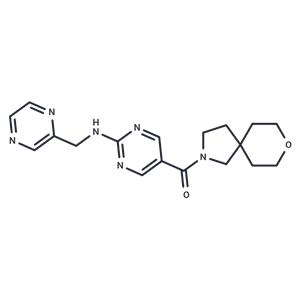
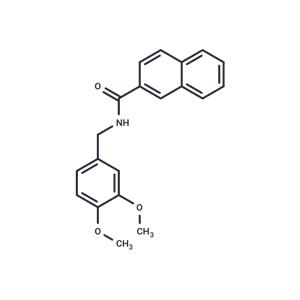
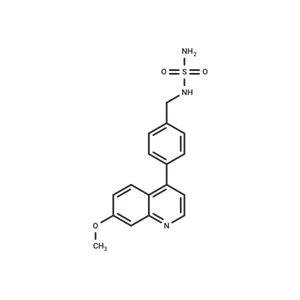
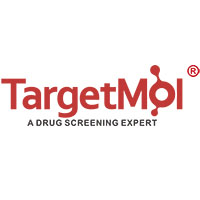
 United States
United States